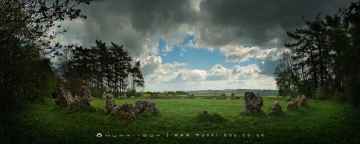Abingdon
Abingdon is a Town in the county of Oxfordshire.
Abingdon postcode: OX14 3UJ
There are great places to visit near Abingdon including some great ancient sites, cities, shopping centres, towns and historic buildings.
Ancient Sites to visit near Abingdon include The Rollright Stones, The King Stone, The Whispering Knights, and The Kings Men.
Abingdon is near some unmissable cities like Oxford,
There are a several good shopping centres in the area around Abingdon like Westgate Oxford.
Banbury is a great place to visit close to Abingdon if you like towns.
The area close to Abingdon boasts some of the best historic buildings including Upton House.
Abingdon History
There are some historic monuments around Abingdon:
Places to see near Abingdon
History of Abingdon
Abingdon Abbey was founded in Saxon times, possibly around AD 676, but its early history is confused by numerous legends, invented to raise its status and explain the place name. The name seems to mean ‘Hill of a man named Abba, or a woman named Abbe’, possibly the saint to whom St Ebbe’s Church in Oxford was dedicated (Abbe of Coldingham or a different Abbe of Oxford). However, Abingdon stands in a valley and not on a hill. It is thought that the name was first given to a place on Boars Hill above Chilswell, and the name was transferred to its present site when the Abbey was moved. In 1084, William the Conqueror celebrated Easter at the Abbey and then left his son, the future Henry I, to be educated there. In the 13th and 14th centuries, Abingdon was a flourishing agricultural centre with an extensive trade in wool and a famous weaving and clothing manufacturing industry. The abbot seems to have held a market from very early times and charters for the holding of markets and fairs were granted by various sovereigns, from Edward I to George II. In 1337 there was a famous riot in protest at the Abbot’s control of this market in which several of the monks were killed. After the abbey’s dissolution in 1538, the town sank into decay and, in 1556, upon receiving a representation of its pitiable condition, Mary I granted a charter establishing a mayor, two bailiffs, twelve chief burgesses and sixteen secondary burgesses, the mayor to be clerk of the market, coroner and a JP. The present Christ’s Hospital originally belonged to the Guild of the Holy Cross, on the dissolution of which Edward VI founded the almshouses instead, under its present name.














